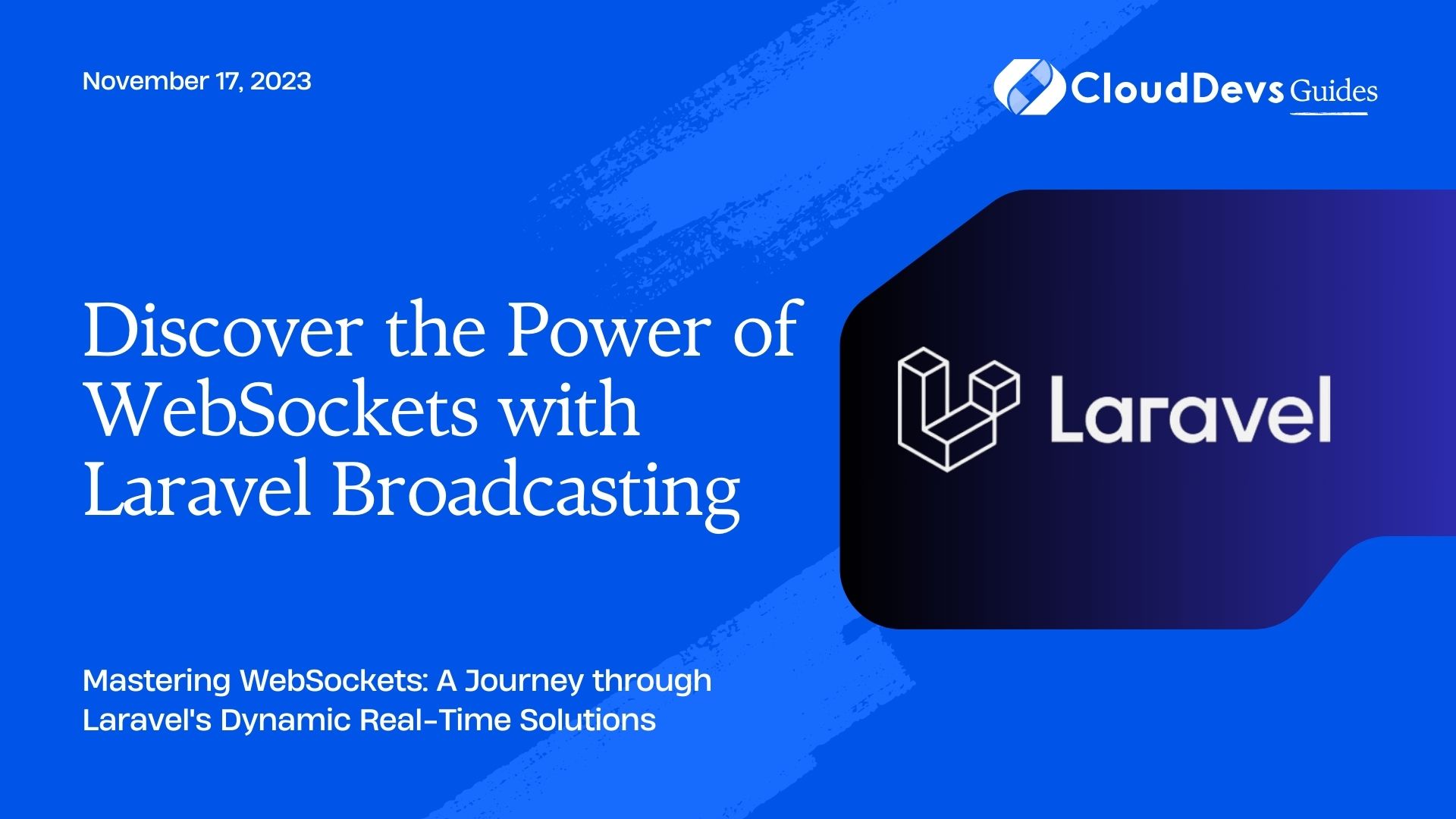Discover the Power of WebSockets with Laravel Broadcasting
When it comes to real-time communication in web applications, pushing live updates, and sending real-time notifications to users, Laravel’s event broadcasting comes to the rescue. This feature provides a seamless way to communicate between your server-side Laravel application and client-side JavaScript applications using WebSockets.
In this article, we’ll explore the beauty of Laravel event broadcasting, diving into examples that highlight its simplicity and power. So let’s jump right in!
1. What is Event Broadcasting?
Event broadcasting in Laravel allows you to broadcast server-side application events to the client-side, allowing your app to update in real-time as events happen. This is particularly useful for applications where live feedback is necessary, such as chat applications, real-time notifications, or live sports updates.
Laravel supports multiple broadcast drivers out-of-the-box:
– Pusher: A hosted service that provides real-time WebSockets.
– Redis: Paired with the Socket.io server.
– Log: Useful for local development and debugging.
– Null: No broadcasting (useful for disabling broadcasting).
For this post, we’ll focus on using Pusher as our broadcast driver due to its simplicity and widespread usage.
2. Setting Up
Before diving into event broadcasting, ensure you have:
- Installed the `pusher/pusher-php-server` package via Composer.
- Configured the broadcasting option in `config/broadcasting.php` to use Pusher, and provided the necessary Pusher credentials.
- Installed the necessary JavaScript libraries: `laravel-echo` and `pusher-js`.
3. Creating a Basic Event
To demonstrate broadcasting, let’s create a simple chat application.
First, we’ll create an event:
```bash php artisan make:event MessageSent ```
Here’s our `MessageSent` event:
```php
namespace App\Events;
use Illuminate\Broadcasting\Channel;
use Illuminate\Broadcasting\InteractsWithSockets;
use Illuminate\Contracts\Broadcasting\ShouldBroadcast;
use Illuminate\Queue\SerializesModels;
class MessageSent implements ShouldBroadcast
{
use InteractsWithSockets, SerializesModels;
public $message;
public function __construct($message)
{
$this->message = $message;
}
public function broadcastOn()
{
return new Channel('chat');
}
}
```
Notice the `ShouldBroadcast` interface; this tells Laravel that this event should be broadcasted.
4. Listening for Events on the Client Side
On the client side, using Laravel Echo and Pusher, you can listen for this event:
```javascript
import Echo from "laravel-echo"
window.Echo = new Echo({
broadcaster: 'pusher',
key: 'YOUR-PUSHER-KEY'
});
Echo.channel('chat')
.listen('.MessageSent', (e) => {
console.log(e.message);
});
```
Now, whenever the `MessageSent` event is fired on the server-side, the message will be logged in the client-side console.
5. Broadcasting Events
Now that we have our event and the client-side listener, we need a way to broadcast the event. Let’s create a simple route:
```php
use App\Events\MessageSent;
Route::get('/send-message/{message}', function ($message) {
event(new MessageSent($message));
return "Message sent!";
});
```
By visiting `/send-message/hello`, the “hello” message will be broadcasted and logged in the client-side console.
6. Broadcast Authorization
For private channels or channels requiring user authentication, Laravel offers the ability to authorize the user.
In `routes/channels.php`, you can define channel authorization logic:
```php
Broadcast::channel('chat', function ($user) {
return Auth::check(); // Allow if user is logged in.
});
```
Then, in your client-side code, listen to a private channel:
```javascript
Echo.private('chat')
.listen('.MessageSent', (e) => {
console.log(e.message);
});
```
Conclusion
Laravel’s event broadcasting simplifies the process of setting up real-time communication in your web applications. Whether it’s for a chat application, notifications, or any real-time update, Laravel has got you covered.
With a rich set of features and straightforward implementation, building dynamic and reactive apps has never been easier. Give it a try, and enjoy the power of real-time communication in your Laravel application!
Table of Contents







